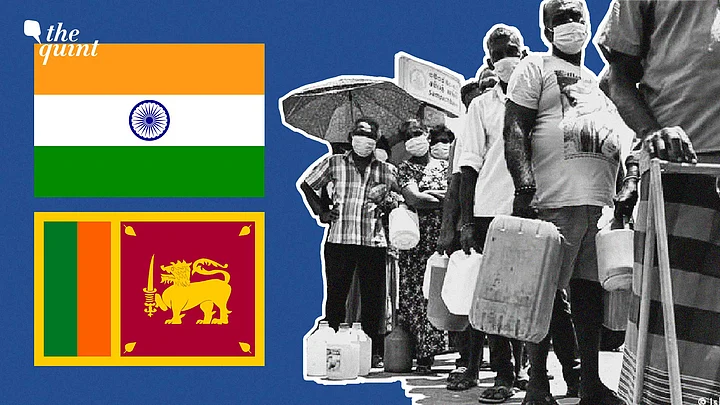(This is a two-part article analysing the wide comparisons being drawn between the Indian and Sri Lankan economies. While India does face some red flags of its own, it's not going the Sri Lanka way. You can read the second part here.)
Given how Sri Lanka’s economic crisis is grabbing global headlines, much of the social media commentary seems to be drawing comparisons between Sri Lanka’s externally driven debt-trap explosion to India’s current macroeconomic situation, or its own debt position.
Yes, India’s external debt and government debt appear to be high relative to Sri Lanka and as per acceptable macro standards. However, the level of foreign currency reserves reflects how any such comparative inductions – at least on the external sector side – are obviously misplaced. India’s high debt-to-GDP ratio is also fuelled by non-governmental compositions of debt holdings: in the form of corporate debt and household debt (though imposing a different kind of risk).
The Nature of Public Debt in India
I also previously argued how any direct comparison made between India and Sri Lanka’s economic positions, or, for that matter, between any other South Asian economy and India, may be based on selective, misplaced notions and that such comparisons must be taken with a pinch of salt.
Each nation – in this case, Sri Lanka and India – with all its social, political, and geographical heterogeneities, has a distinct economic landscape.
India has persistently faced a high ratio of public debt-to-GDP during the past decades, which is far higher than the different Finance Commissions’ long-term target of having a debt-to-GDP ratio below 60%. This rising trend has generally been accompanied by an expansion in the size of governments. The persistence of a high debt-to-GDP ratio, according to Mohanty and Panda (2019), implies that public debt, especially domestic debt, has become an important means for mobilisation of financial resources for the Indian government to meet its growing expenditure needs.
In India, domestic debt makes up nearly 95% of the aggregate public debt, while external debt constitutes a very little share (5%) of the total public debt. Do note that in Sri Lanka’s context, the scenario was reversed.
Red Flags to Look out for
Nevertheless, persistent accumulation of public debt, even by domestic means, might still result in higher policy uncertainties – reduction of essential revenue expenditure – and affect economic growth adversely, in addition to its impact on various macro variables such as interest rate, inflation, investment, etc, in India.
Another important channel through which the accumulation of public debt can affect economic growth is that of long-term interest rates. Higher long-term interest rates, resulting from more debt-financed government budget deficits, can crowd out private investment, thus dampening potential output growth.
A large public debt might create a debt overhang, a situation in which investment is reduced or postponed since the private sector anticipates that the returns from their investment will serve to pay back creditors.
In times of a recession or a low GDP growth-credit growth-domestic private investment cycle, accompanied by a poorer Balance of Payment (external) position – as is being observed in India now – the denominator’s (GDP growth) weakness for India may not ensure a more balanced outlook for its rising public debt accumulation levels.
Where Things Got Difficult for Sri Lanka
Still, an increasing burden of public debt also depends on how the borrowed funds are used, when mobilised through different public debt sources. If public debt funds are wasted on relatively unproductive activities (like financing current expenditure or paying interest on borrowed money), it becomes a dead weight loss due to its adverse effects on capital accumulation, as well as productivity. This is where things got difficult for Sri Lanka, where it ended up borrowing excessively to finance its domestic expenditure and could not generate enough domestic growth over time – and domestic tax revenue – to pay off what it owed in foreign currency denominations.
Sure, there are lessons India can take from the Sri Lanka situation in the context of political economy and the dangerous combination of a centralised, populist politics pursuing ad hoc economic policies. But beyond that, making any linear, simplistic arguments about India’s macroeconomic position being ‘equally vulnerable’ to its island neighbour is a misconception that can be avoided.
Nonetheless, India also has many challenges of its own to surmount, as has been detailed in the next article of the series.
(Deepanshu Mohan is Associate Professor and Director, Centre for New Economics Studies, Jindal School of Liberal Arts and Humanities, OP Jindal Global University. He is Visiting Professor of Economics to Department of Economics, Carleton University, Ottawa, Canada. This is an opinion piece and the views expressed are the author's own. The Quint neither endorses nor is responsible for them.)
